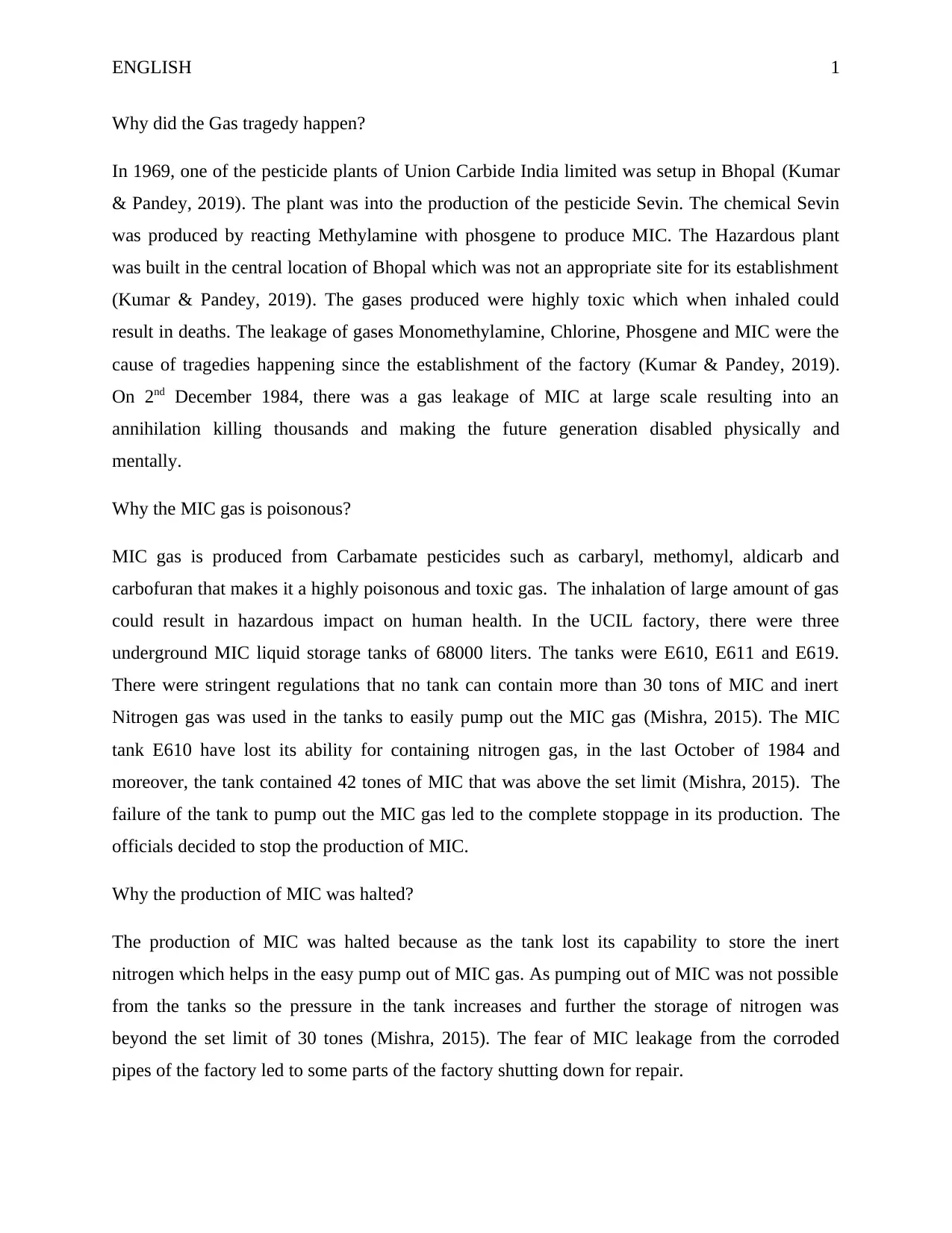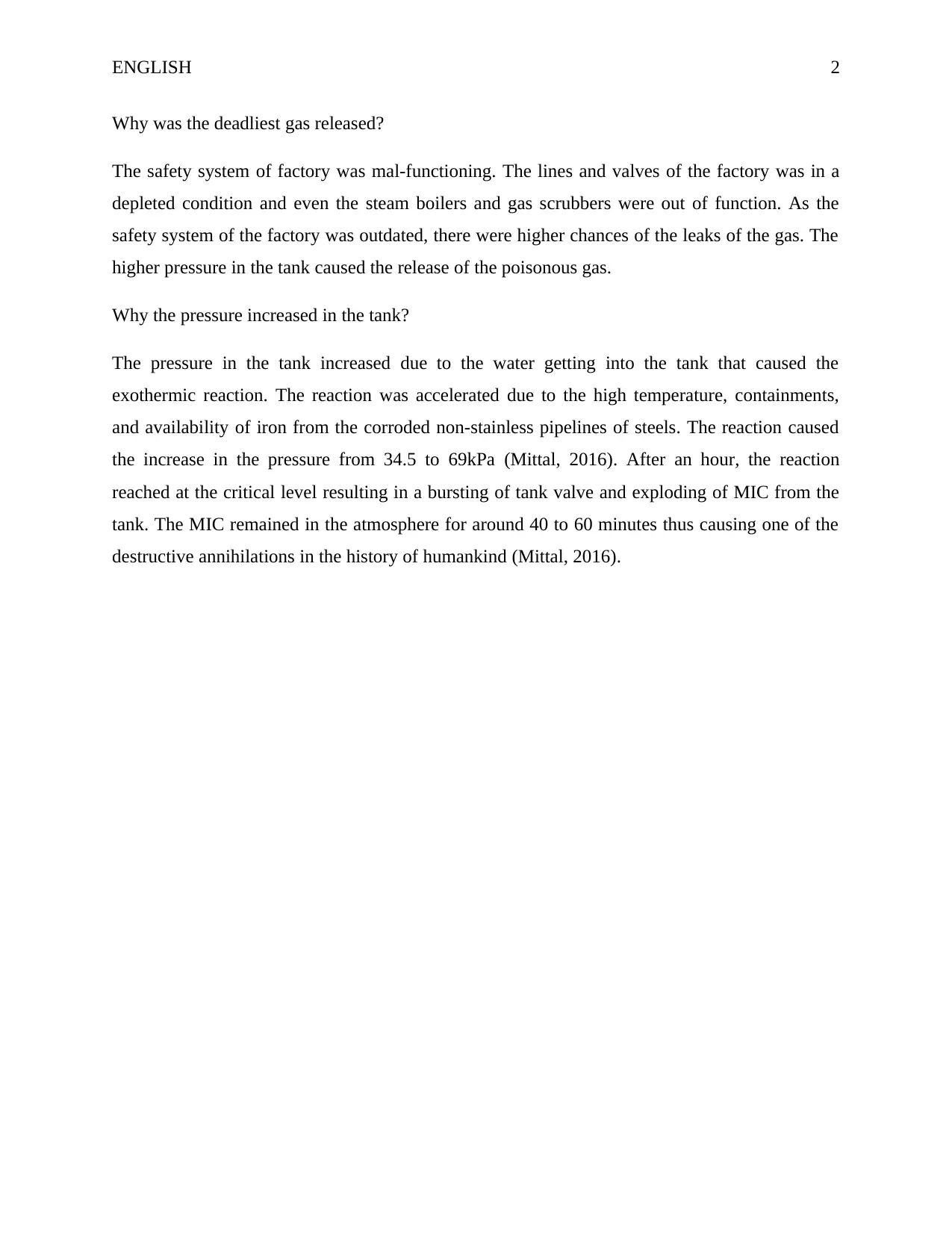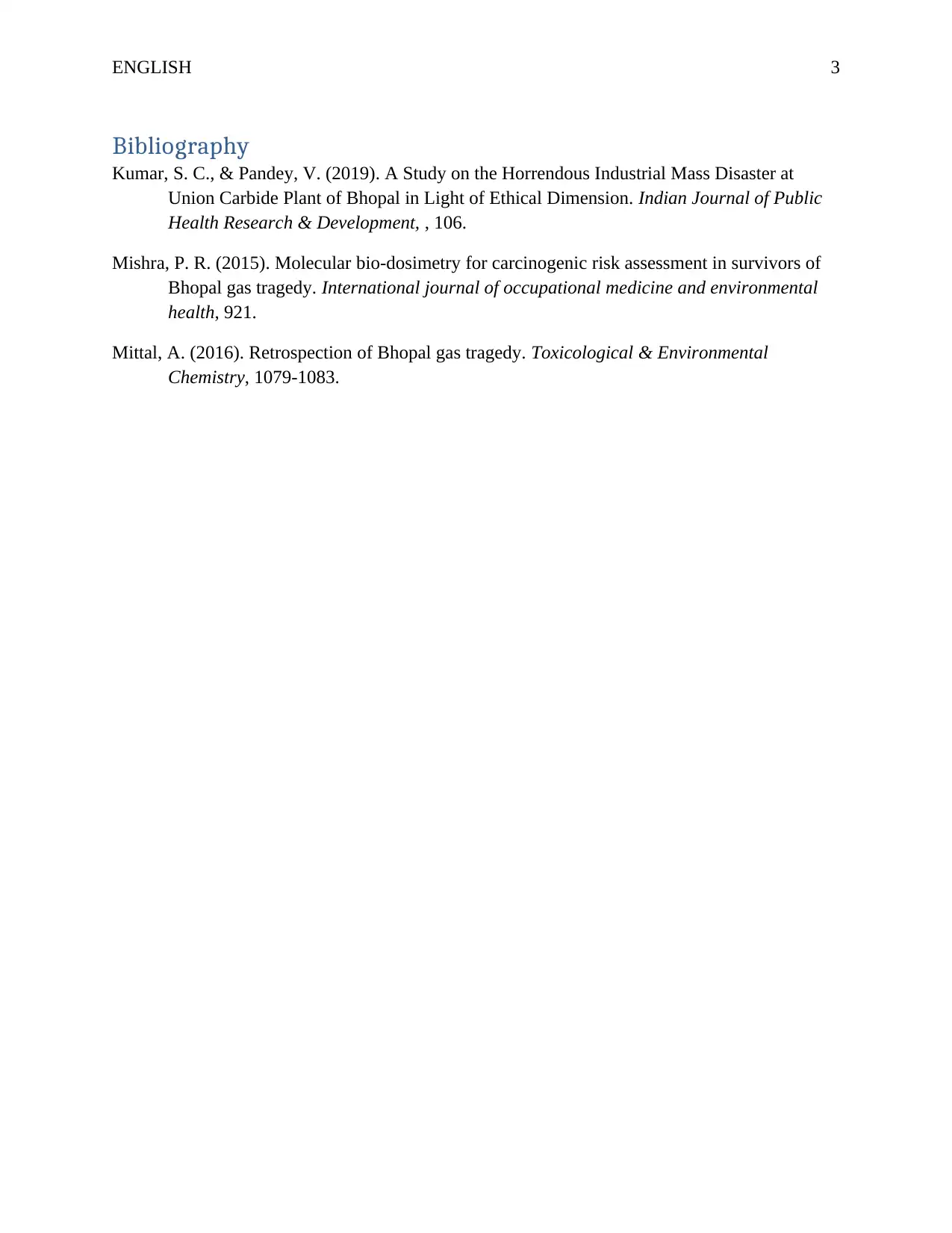Report: Analysis of the Bhopal Gas Tragedy Incident
VerifiedAdded on 2022/12/23
|4
|760
|46
Report
AI Summary
This report delves into the tragic Bhopal gas disaster, examining the underlying causes and devastating consequences of the 1984 industrial accident. It investigates the establishment of the Union Carbide India Limited plant, the production of the highly toxic MIC gas, and the factors contributing to the gas leak. The report analyzes the malfunctioning safety systems, the role of water contamination in the tank, and the resulting exothermic reaction that led to the explosion. It highlights the impact of the gas leak on human health, detailing the reasons behind the gas's toxicity and the resulting annihilation of thousands of people. The report references key literature to provide a comprehensive understanding of the disaster and its long-lasting effects.
1 out of 4











![[object Object]](/_next/static/media/star-bottom.7253800d.svg)